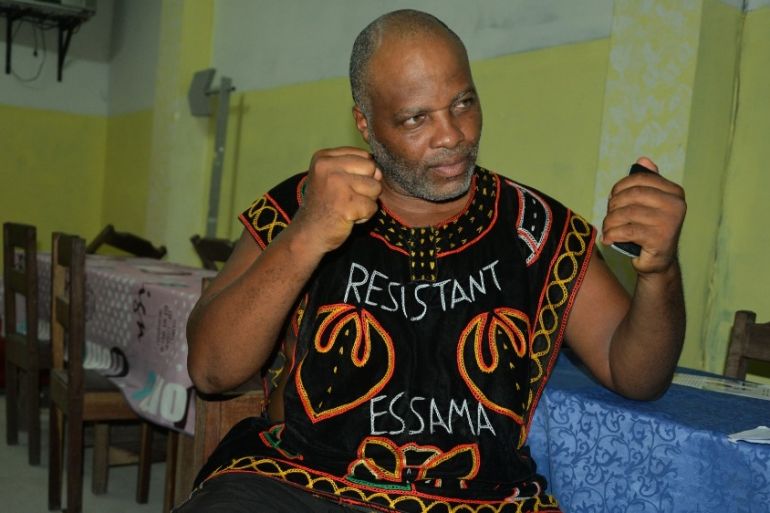The activist purging Cameroon of French colonial monuments
Andre Blaise Essama has long flogged, beheaded and toppled statues honouring the French colonial era.

Activist Andre Blaise Essama has been battling to purge Cameroon of monuments celebrating its French colonial past and replace them with local heroes long before protests swept the world after the death of George Floyd.
Essama has flogged, beheaded and toppled statues honouring the French colonial era, earning himself arrests, fines and jail time for vandalism.
Keep reading
list of 4 items‘Feel less and less like playing’: Vinicius Jr in tears over racist abuse
‘Rendered invisible’: A wave of anti-Arab violence tests US hate crime laws
Germany bans far-right Austrian nationalist Martin Sellner from entry
Over the years, one monument has drawn his particular ire – a statue of French World War II general Philippe Leclerc who was sent by Charles de Gaulle to the colony to rally local leaders and conscripts to help free France from Nazi occupation.
“I have removed General Leclerc’s head seven times. I buried them in my village,” Essama, a 44-year-old former computing engineering student, told Reuters news agency.
The authorities replaced the head each time. A wrought iron fence was built in 2015 to protect the monument but that has not stopped Essama.
The French general’s place is in a museum, he said. He does not want Leclerc and other colonial administrators to be erased from history but believes they should not be celebrated in Cameroon’s public spaces.
The statue of Leclerc, leaning on a cane in front of a commemorative mural, was inaugurated in 1948. It stands by the central post office in the administrative district of Cameroon’s commercial capital, Douala.
The area is dotted with colonial vestiges.
Opposite the monument is a square named after Leclerc, which contains a memorial to French and allied World War I soldiers and sailors. The main avenue from the square, one of the longest in Douala, is named after de Gaulle.
“National monuments are important. They impact national memories and evoke national pride,” Essama said, dusting dirt off a statue of Cameroonian football legend Samuel Mbappe Leppe.
“Mbappe Leppe was a great player. He made you dream. He paved the way for many footballers. Mbappe Leppe is a real hero,” Essama shouted, raising his fist to the sky as onlookers applauded.
When Essama started his campaign a decade ago, people thought of him as slightly eccentric. He has since created an association that includes artists who have sculpted more than 30 works of art in honouring various Cameroon heroes.
A few years ago, they tried to erect a statue of one of Cameroon’s independence leaders on a major roundabout in Douala but it was taken down by the police.
Cameroon was a German colony until it was split between Britain and France after World War I. Under United Nations trusteeship, the French-administered area gained independence in 1960 while the southern British Cameroons voted to join French Cameroon in a federation in 1961.